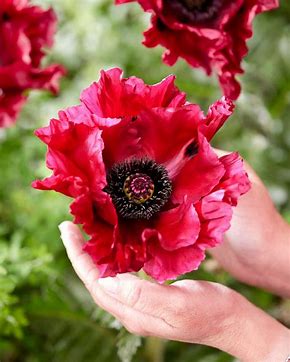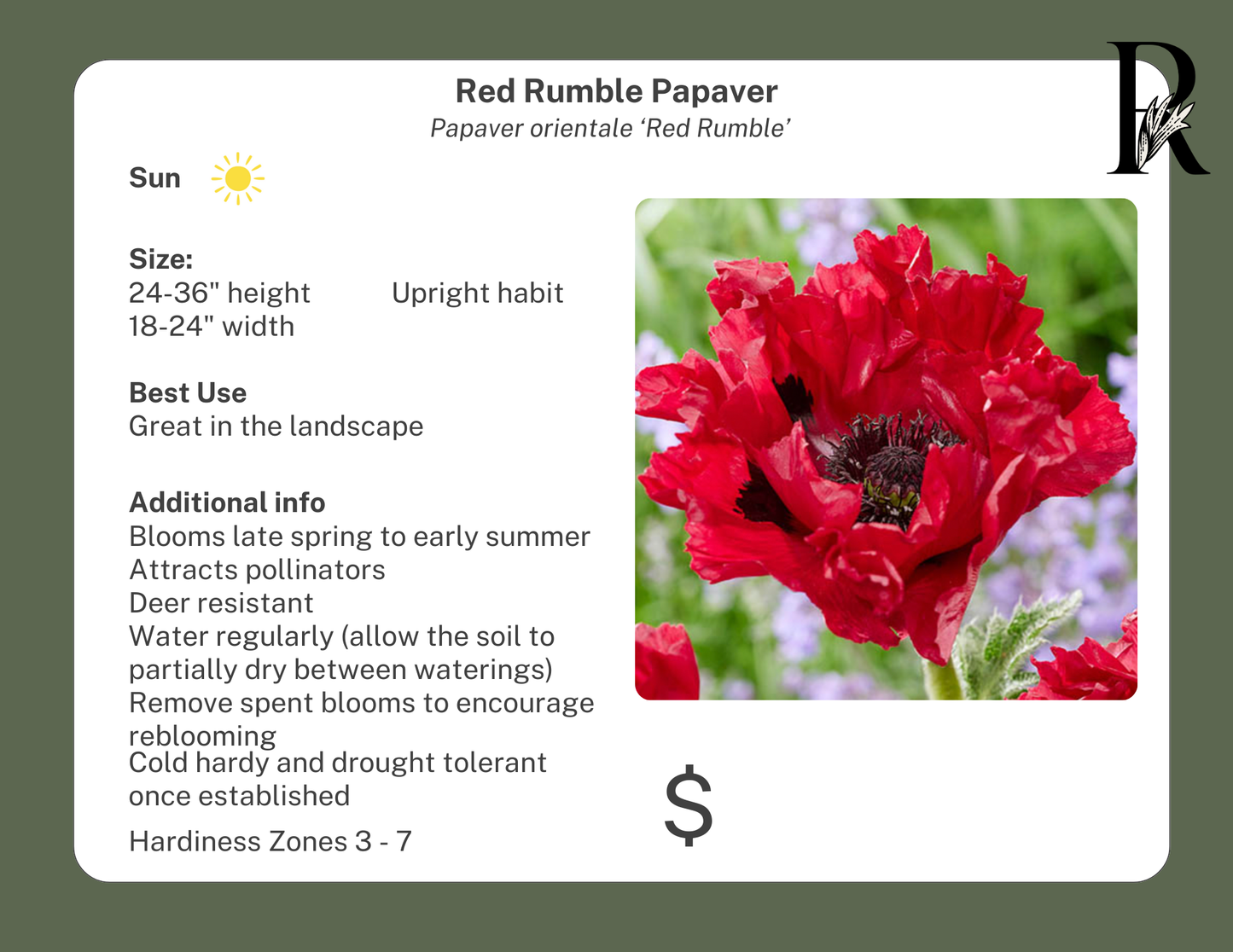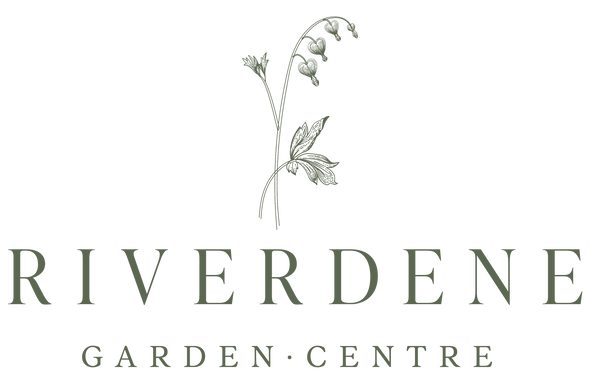1
/
of
2
Riverdene Garden Centre
'Red Rumble' Poppy
'Red Rumble' Poppy
Regular price
$12.99 CAD
Regular price
Sale price
$12.99 CAD
Unit price
/
per
Couldn't load pickup availability
Red Rumble Poppy – Care Guide
Overview
The Red Rumble Poppy is a striking annual poppy variety known for its bold scarlet-red blooms, often with dark central markings. It’s perfect for cottage gardens, pollinator patches, or anywhere you want to make a vibrant statement. This variety adds delicate texture and dramatic color with minimal fuss.
Key Characteristics
- Botanical Name: Papaver spp. (likely Papaver rhoeas or Papaver somniferum)
- Common Name: Red Rumble Poppy
- Plant Type: Annual
- Hardiness Zone: Grown as an annual in Zones 2-9
- Height: 24–36 inches (60–90 cm)
- Spread: 6–12 inches (15–30 cm)
- Bloom Time: Early to mid-summer
- Flower Color: Intense red, often with black or dark centers
- Foliage: Soft, finely divided, blue-green leaves
Sun Requirements
- Full Sun is best — at least 6 hours per day.
- Will tolerate light shade, but blooms will be fewer.
Soil Needs
- Prefers well-drained, light soil — sandy or loamy.
- Avoid overly rich or damp soils, which can cause poor flowering or root rot.
- pH: Neutral to slightly alkaline is ideal.
Watering Needs
- Low once established.
- Water moderately until seedlings are growing well, then only during dry spells.
- Avoid overhead watering to prevent mildew on foliage.
Planting & Spacing
- Direct sow outdoors in early spring or late fall (in Zone 3, early spring is best).
- Do not transplant – poppies hate root disturbance.
- Lightly press seeds into the soil surface – they need light to germinate.
- Spacing: 6–12 inches apart
Maintenance
- Very low-maintenance.
- Deadheading can prolong bloom time, though leaving some spent blooms allows for self-seeding.
- Let seed heads mature if you want natural reseeding the following year.
- Cut back after blooming if plants become ragged.
Pests & Diseases
- Generally pest- and disease-free.
- Watch for:
- Aphids early in the season
- Powdery mildew in damp, crowded conditions
- Ensure good air circulation and avoid overhead watering.
Wildlife & Companion Benefits
- Pollinator-friendly – bees and hoverflies love it.
- Great in wildflower and cottage gardens.
- Pairs beautifully with cornflowers, bachelor’s buttons, larkspur, and calendula.
Garden Uses
- Border fronts
- Wildflower meadows
- Cutting gardens (flowers are short-lived in the vase but beautiful)
- Memorial plantings (poppies are traditional symbols of remembrance)
Share




